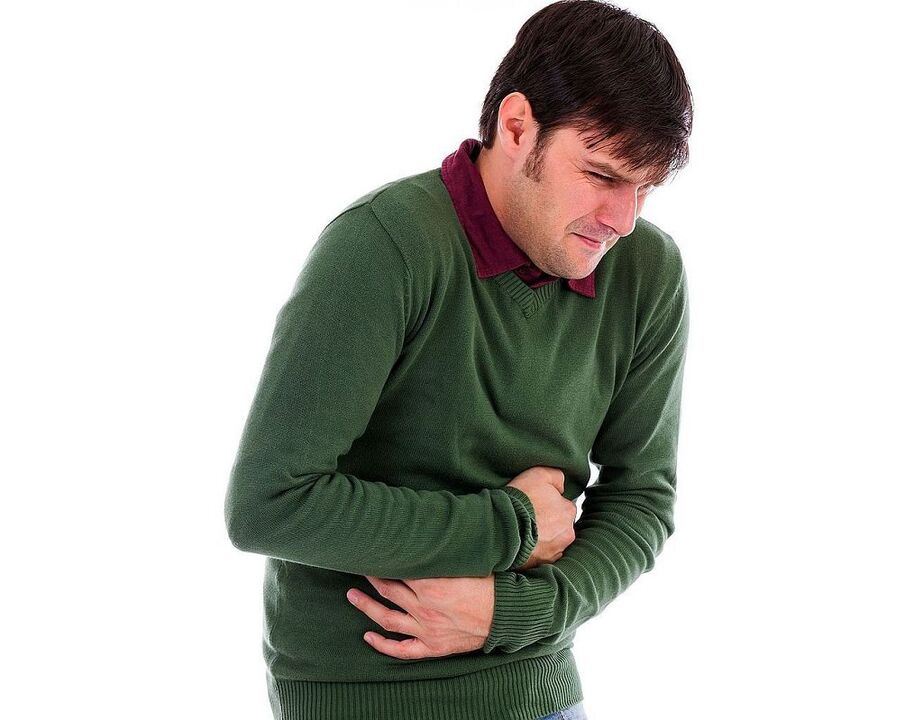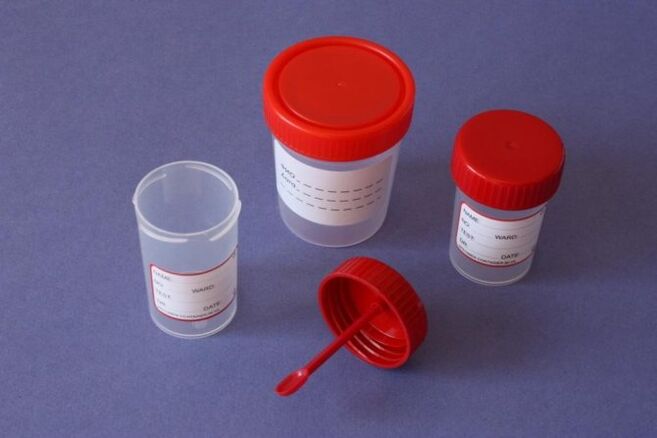The modern rhythm of life simply does not allow many people to pay attention to minor misunderstandings that can happen to them every day, and when a person randomly, for example, with a normal medical examination, finds out that parasites live in his body, he begins to panic, asking himself a lot of questions, what to do and how to be parasites.
Unfortunately, almost any light malaise, people are simply used to connect with ordinary stress, hard day and disorders.
The fact that not everyone will believe in the body that can live in the body for many years will believe in the body.
The bottom line is that the presence of worms in the body, an inexperienced person, is quite difficult to determine, and especially if this person does not even allow thoughts in his head.
In fact, symptoms that are able to indicate the presence of worms in the human body can depend on a huge number of factors, and be that as it may, worms cause not only terrible disgust, unpleasant symptoms, but also a huge number of diseases, with far from favorable consequences.
That is why, perhaps, for any person, it is necessary not only to understand the principles of parasites, but also to know what symptoms can manifest, how to act when they are detected and how to get rid of them.
Classification and location of parasites

To answer the question of how worms fall into the human body, in principle, in principle, it will not work, the bottom line is that all the worms are parasites, and there are at least 250 varieties, appear in people, as a result of their penetration into the body with a variety of ways.
Each individual from these varieties can cause a dangerous disease, which is accompanied by both symptoms of a characteristic type and signs of general helminthic invasion.
Parasites of the first type are combined under the worms of a round look and nematodes.The second type includes saucers and strip worms.
There is also a different separation of parasites:
- Contact.
- Biogelminters.
- Geogelminters.
All these parasites have their own individual characteristics in the development, reproduction and localization in the human body.
Biogelmants include various tapeworms, echinococci, nematodes, cestodes and trematodes.
Before reaching its full development, this category of parasites usually replaces several types of temporary owners before being in the human body.
The category of geogelmintes includes ascarides, plowers, ankylostomes and non -core.These parasites conduct their development without a chain in the form of intermediate hosts.
To the contact parasites of pinworms and dwarf tapeworms.These helminths are provocateurs of enterobiosis and hymenolepidosis
The reasons why parasites penetrate the body from the category of biogelminters are eating meat from meat that have not been processed properly.
For example, beef meat may contain bull -clouding, and pork, respectively pork.
In small -salted and raw fish, opisthorch and a wide tape can live.This is explained by the fact that water in freshwater reservoirs is inhabited by a variety of parasite larvae, which swim in it or attached to algae.
This water is often drunk in raw form, dishes are washed in it and also during nature in nature, people simply bathe and, accordingly, become infected.
It is known that parasites, categories of geogelminters, fall into the soil along with feces of animals and people infected by them, then again enter the person in the body due to the lack of hygienic measures, or while working on a personal plot.
Infection of a healthy person can also occur due to contact with infected people, with air inspiration, saturated eggs of parasites, and through dishes, linen, and household items.
The main place of localization of parasites, which primarily include chain and nematodes, is the colon.
Also in the storage zone are deployed by the sobs and pinworms.And parasites from the unit of nematodes, most often parasitized in the liver, gall bladder and biliary tract.
During the parasitization of trematodes in the liver and bile ducts, in view of their life, they form cysts in them, which soon break and then the bloodstream spreads them towards other organs.
Parasites can get:
- To the brain region.
- In the eye camera.
- To muscle vessels.
- In subcutaneous fat.
Also, with a blood flow, the larvae of such a parasite as a pork chain are carried through the body.
Types of common helminthiasis in humans
Despite the fact that there are a lot of parasites, almost the same species live in a person:
- Askarides provoking the disease ascariasis.
- A wide tape, from the presence of which there is a diphyllobotriosis.
- The pinworms that are most often infected with children with the development of enterobiosis.
All these parasites cause great damage to the human body.They absorb nutritious juices, as a result of which hypovitaminosis, anemia and other no less complex types of disorders develops.
All these parasites, despite their general resemblance, have not only the difference in the image of parasitization, but also in the method of infection.For example, the acaride worm enters the human body due to eating dirty vegetables and fruits.
Difillobotriosis can provoke poorly salted fish, raw perch, pike, kharius, omul and other freshwater fish.
The pinworms penetrate to a person, due to the lack of hygiene through the contact and household tracks and through food infection.
The development of helminthiasis occurs from two weeks to 3 months with an acute stage of infection and after a month or 2 months in chronic.
Parasites squeeze and injure mechanically all the tissues and organs in which they are localized.
When the chronic stage of helminthiasis occurs, resistance decreases and the human immune system is weakening and, as a result, people become more susceptible to various infections in the form of fungal, viral and bacterial.
In addition, in the presence of parasites, each person increases the risk of oncological diseases in those organs where they are localized.
Types of symptoms of helminthic invasion

Symptoms of worms directly depend on the type of parasite to which the human body is subject to.
The first manifestations with ascaridosis begin to appear 2-3 days after infection, with parasitosis, after 2-3 weeks, and with filiriosis, after about 6-18 months.
Each parasite, in addition to standard signs, has specific varieties, for example:
- With ascariasis, rashes are manifested on the skin.Attacks of nausea in a compartment with severe pain, reduced appetite, the composition of eosinophils increases in the blood.The integrity of the intestines with the development of peritonitis and appendicitis is disturbed.Multiple liver lesions and obstruction in guts.
- Difillobotriosis notes such signs as nausea, weakness, dizziness, problems with defecation and severe pain at the navel level.Also, a person abruptly loses weight, there are signs of anemia, due to the fact that he lacks proteins, iron and vitamin V.
- Enterobiosis is characterized by itching at the anus, and as a result of combing, dermatitis manifestations.Also, the stomach often hurts, and in the girls, if the pinworms penetrate the vagina, vulvovaginitis often develops.
Also, due to the presence of worms, symptoms appear that are characteristic of all types of parasites.These include:
- Recurrent and constantly itchy rashes on the epidermis.
- Local and generalized edema.
- Cough.Attacks of suffocation and fever.
- Regional lymph nodes are increasing.
- Painful sensations in the joints and tissues.
- Allergic myocarditis, minngoencephalitis, pneumonia, hepatitis or hemostasis disorders.
- Terminal hematuria, frequent urge to urination, pain in chronic genitopoline schistomotosis.
- Stool disorders, bloating and abdominal pain, impurities of blood due to intestinal chistomotosis.
Such parasitic infections such as alveococcosis, echinococcosis and tancosis do not give any signs of infection for some time, after which there is a decay and ruptures of small cysts, in which parasites are localized and as a result there are: arise: arise:
- Peritonitis.
- Pleurisy.
- Anaphylactic shock with lesions in the central nervous system.
Due to the fact that such parasites as ankylostomes feed on blood, they seriously damage the vessels and, due to this, chronic bleeding is provoked.
Parasitic infection diagnostics methods

Whatever diagnostic methods, all of them are aimed at the speedy detection of parasites in the human body.In order to do this as quickly and efficiently as possible, the diagnosis of parasitic infection should be comprehensive, and therefore include all available methods.
For example, a standard method that is used for any type of infection is an analysis of feces for an egg -player, although it itself is not informative enough, in a compartment with other methods, the likelihood of effectiveness in identifying parasites increases.
If infection allegedly occurred by pinworms and ascarides, common methods are:
- Calais analysis.
- Scraping to enterobiosis.
- For girls, methods of scraping from the vagina, the navel and inguinal folds are used.
- It is also widely used, due to effectiveness, they have various immunological tests.
During the examination, hepatostergelia is found, which occurs with increased liver and spleen.In the blood there is an increase in the level of eosinophils, as a result of which eosinophilia appears.With dysproteinemia, different protein species are in imbalance.
With the localization of individual parasites in the body, the symptoms that indicate them or does not manifest itself in any way, or if it occurs, it is quite weak.
In the presence of a huge number of parasites within the human organism, especially in young children, dyspepsic, pain and acenoural signs occur.
Ascarides with their vital activity lead to pancreatitis, intestinal obstruction and mechanical jaundice occur.
With such a parasitic infection as enterobiosis, most often, bouts of prunal itching in the dark are manifested.
In infection of any trertodosis in the liver, these parasites provoke diseases such as pancreatitis, hepatitis, cholecystocholangitis and various neurological disorders, including chronic forms of diseases.
As additional measures, the study can be carried out on urine, blood, sputum, bile, muscle tissue and prison mucus.
Using a microscope, it is possible to identify parasites in these materials.And with the help of a macroscopic method, even small pieces of parasites, or entire individuals.
It is also necessary to know where exactly the parasites are localized, in this case, ultrasound is made, computed tomography, endobiopsy and endoscopy are widely used.
The removal of parasites and, accordingly, further deliverance from a number of unpleasant symptoms, is carried out using special drugs, which are divided into tablets with a wide range of action and focused on a certain type of parasites.
Medical measures using drugs

Treatment of helminthic invasion, although in adult patients, although in children, it should be carried out under the constant control of the attending physician, and accordingly drugs can only be prescribed.
This is explained by the fact that any antiparasitic drugs are capable of with improper dosage and a disturbed course, harm a person, poisoning his body.
Also, the attending physician is capable of choosing one or another drug based on the available data.
When a helminthic invasion takes a sign expressed in exacerbation, other methods, such as various infusions, which include an isotonic glucose solution and saline, become more relevant.
Also, vitamin B6 and others can be prescribed in the form of injections.
If hyperthermia occurs in worms, the prescription of various antihistamines is mandatory.
If hepatitis and allergic myocarditis occur, therapy is carried out with drugs containing potassium.If cases of heart failure develop with parasitosis, treatment is carried out using special cardiotonic drugs.




